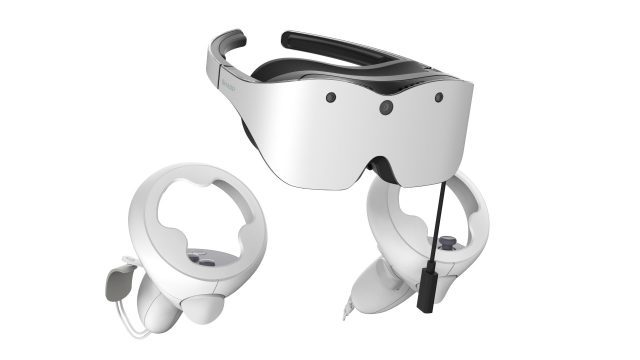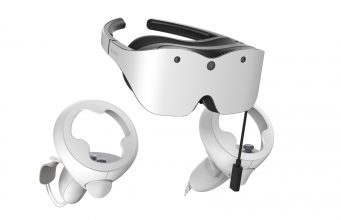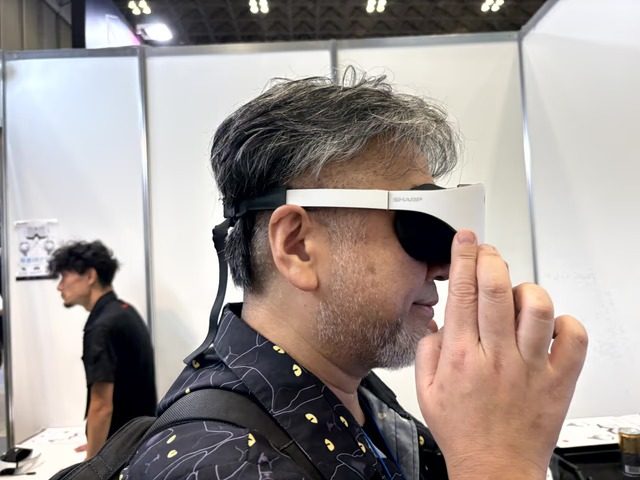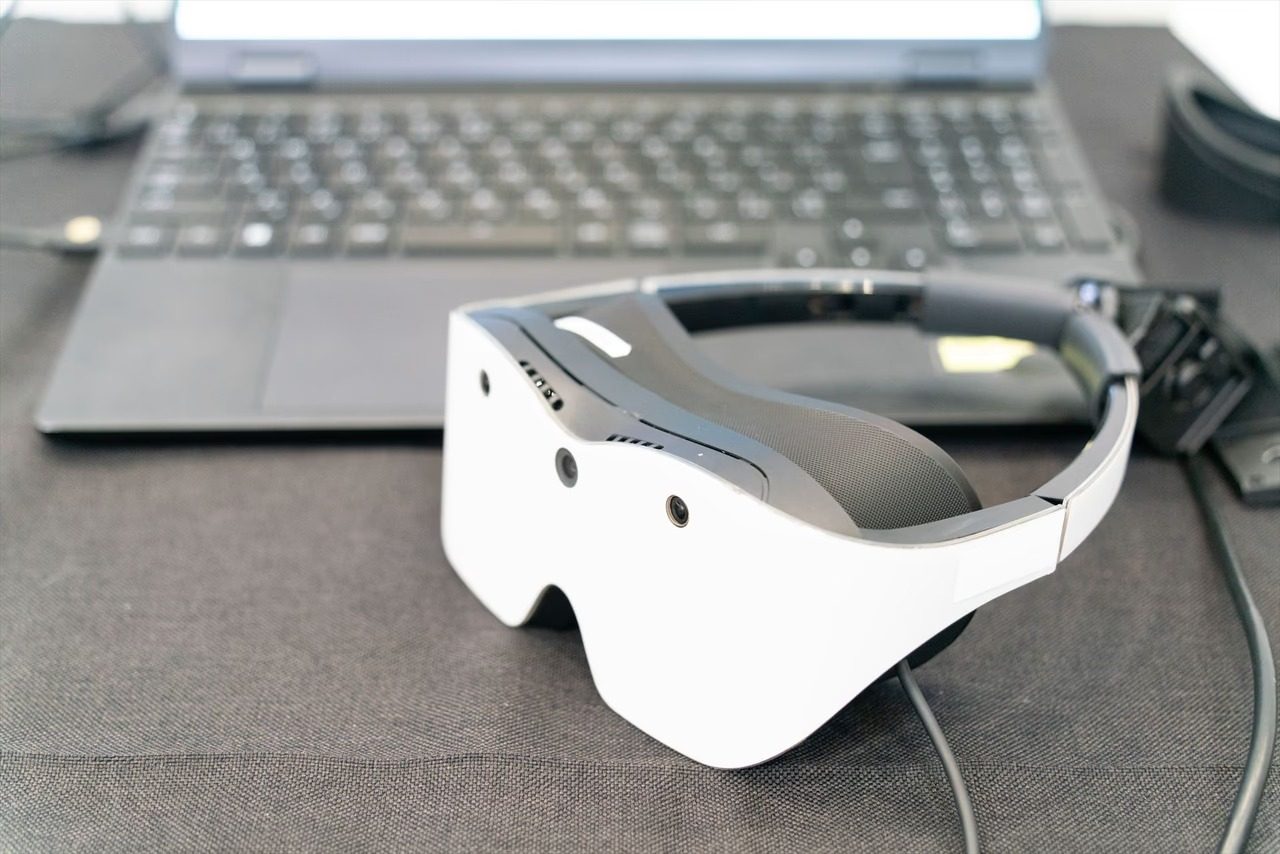
Johnny Silverhand’s story was pretty much done, no matter what you did in 2077
The post <em>Cyberpunk</em> Creator Tells Keanu Reeves To ‘Contact’ Him About Bringing His Character Back appeared first on Kotaku.


Johnny Silverhand’s story was pretty much done, no matter what you did in 2077
The post <em>Cyberpunk</em> Creator Tells Keanu Reeves To ‘Contact’ Him About Bringing His Character Back appeared first on Kotaku.
You may be disappointed if you go looking for Google’s open Gemma AI model in AI Studio today. Google announced late on Friday that it was pulling Gemma from the platform, but it was vague about the reasoning. The abrupt change appears to be tied to a letter from Sen. Marsha Blackburn (R-Tenn.), who claims the Gemma model generated false accusations of sexual misconduct against her.
Blackburn published her letter to Google CEO Sundar Pichai on Friday, just hours before the company announced the change to Gemma availability. She demanded Google explain how the model could fail in this way, tying the situation to ongoing hearings that accuse Google and others of creating bots that defame conservatives.
At the hearing, Google’s Markham Erickson explained that AI hallucinations are a widespread and known issue in generative AI, and Google does the best it can to mitigate the impact of such mistakes. Although no AI firm has managed to eliminate hallucinations, Google’s Gemini for Home has been particularly hallucination-happy in our testing.
As AerynOS powers ahead without its founder, the open source world might ask: Why does Ikey Doherty keep going AWOL?
The post Ikey Doherty’s Gone Missing Again appeared first on FOSS Force.
Barry Warsaw, writing for the Python steering council, has announced
that PEP 810 (“Explicit lazy
imports”) has been approved, unanimously, by the four who could vote. Since
Pablo Galindo Salgado was one of the PEP authors, he did not vote. The PEP provides a way to defer importing modules until the names
defined in a module are
needed by other parts of the program. We covered the PEP and the discussion around it
a few weeks back. The council also had “recommendations about some of
“, including:
the PEP’s details, a few suggestions for filling a couple of small
gaps
Use lazy as the keyword. We debated many of the given alternatives
(and some we came up with ourselves), and ultimately agreed with the PEP’s
choice of the lazy keyword. The closest challenger was
defer, but once we tried to use that in all the places where the
term is visible, we ultimately didn’t think it was as good an overall
fit. The same was true with all the other alternative keywords we could
come up with, so… lazy it is!What about from foo lazy import bar? Nope! We like that in both module imports and from-imports that the lazy keyword is the first thing on the line. It helps to visually recognize lazy imports of both varieties.
A developer operating under the handle @XenoPanther has stripped Windows 7 down to 69MB. The OS boots but runs almost nothing because critical files like common dialog boxes and common controls are missing. @XenoPanther described the project on X as “more of a fun proof of concept rather than something usable.” The desktop appears and the genuine check remains intact.
Read more of this story at Slashdot.
Arrow has introduced the AXC3000 Starter Kit, a compact FPGA development platform featuring the first production device from the Altera Agilex 3 family. Following the Agilex 5 AXE5000 devkit, this board provides a smaller form factor and focuses on low- to mid-range applications that demand efficient compute performance in compact designs. The Altera Agilex 3 […]
Python already has several ways to run programs concurrently —
including asynchronous functions, threads, subinterpreters, and multiprocessing
— but all of those options have drawbacks of one kind or another.
PEP 703 (“Making the Global Interpreter Lock Optional in CPython”)
removed a major barrier to running Python
threads in parallel, but also exposed Python programmers to the same tricky
synchronization problems found in other languages supporting multithreaded
programs. A new draft proposal
by Mark Shannon,
PEP 805 (“Safe Parallel Python”), suggests a way for the CPython runtime
to cut down on concurrency bugs, making it more practical for Python programmers
to use versions of the language without the global interpreter lock (GIL).

Despite the maps in EA’s new shooter being about the same size as those in BF1, the scale of the two feels drastically different
The post Why <i>Battlefield 6</i> Maps Feel So Dang Tiny appeared first on Kotaku.
If you’ve signed up for an Amazon Prime subscription in the last few years, you may have some cash coming your way. Amazon recently settled a lawsuit with the Federal Trade Commission (FTC) over deceptive enrollment and cancellation practices, including enrolling customers in Prime without their consent and making it difficult to cancel. The company is now set to pay out $1.5 billion in refunds to affected consumers.
Here’s who qualifies, and how to make sure you get your money.
Refunds will be paid out to select Amazon Prime subscribers in the U.S. In order to qualify, you must also meet the following criteria:
You signed up for your Prime account between June 23, 2019 and June 23, 2025.
You signed up through a “challenged enrollment flow” (the universal Prime decision page, shipping selection page, single page checkout, or Prime Video enrollment flow) OR you tried cancel your Prime subscription between the dates listed above and were unsuccessful.
You used no more than three Amazon Prime benefits in any 12-month period after enrolling.
If you signed up for Amazon Prime before or after this time frame, or via another enrollment flow, you aren’t covered by the settlement.
In most cases, you won’t need to take any action. If you are eligible, Amazon will automatically refund your Amazon Prime subscription fees by December 25, 2025—up to a maximum of $51.
Some Amazon Prime customers who don’t qualify for automatic refunds may still be able to claim some cash from the settlement. If you signed up through a challenged enrollment flow and used up to 10 Prime benefits in any 12-month period, you may receive a claims form from Amazon via email sometime in early 2026. You’ll need to complete your claim within 180 days to get a refund.
As Mashable notes, payouts could trickle down to other Amazon Prime customers if the full settlement isn’t exhausted in the first two phases—though these refunds are likely to come later.
The first test release of the Git 2.52 distributed revision control system is now available. As has been a common trend, Git 2.52 is making further preparations in anticipation of the big Git 3.0 milestone…

The CEO of the largest satellite company in the world just proposed a bold—and totally misguided—solution to the climate crisis.
On Monday, OpenAI announced it has signed a seven-year, $38 billion deal to buy cloud services from Amazon Web Services to power products like ChatGPT and Sora. It’s the company’s first big computing deal after a fundamental restructuring last week that gave OpenAI more operational and financial freedom from Microsoft.
The agreement gives OpenAI access to hundreds of thousands of Nvidia graphics processors to train and run its AI models. “Scaling frontier AI requires massive, reliable compute,” OpenAI CEO Sam Altman said in a statement. “Our partnership with AWS strengthens the broad compute ecosystem that will power this next era and bring advanced AI to everyone.”
OpenAI will reportedly use Amazon Web Services immediately, with all planned capacity set to come online by the end of 2026 and room to expand further in 2027 and beyond. Amazon plans to roll out hundreds of thousands of chips, including Nvidia’s GB200 and GB300 AI accelerators, in data clusters built to power ChatGPT’s responses, generate AI videos, and train OpenAI’s next wave of models.
An anonymous reader shares a report: arXiv, a preprint publication for academic research that has become particularly important for AI research, has announced it will no longer accept computer science articles and papers that haven’t been vetted by an academic journal or a conference. Why? A tide of AI slop has flooded the computer science category with low-effort papers that are “little more than annotated bibliographies, with no substantial discussion of open research issues,” according to a press release about the change.
arXiv has become a critical place for preprint and open access scientific research to be published. Many major scientific discoveries are published on arXiv before they finish the peer review process and are published in other, peer-reviewed journals. For that reason, it’s become an important place for new breaking discoveries and has become particularly important for research in fast-moving fields such as AI and machine learning (though there are also sometimes preprint, non-peer-reviewed papers there that get hyped but ultimately don’t pass peer review muster). The site is a repository of knowledge where academics upload PDFs of their latest research for public consumption. It publishes papers on physics, mathematics, biology, economics, statistics, and computer science and the research is vetted by moderators who are subject matter experts.
Read more of this story at Slashdot.

The SouljaGame Flip is just a Retroid Pocket Flip 2
The post SouljaBoy Is Selling Someone Else’s Retro Handhelds For As Much As A Switch 2: ‘He Does Not Have Permission’ appeared first on Kotaku.


Sharp announced it’s launching a crowdfunding campaign for a slim and light PC VR headset in Japan, called Xrostella VR1.
Sharp first showed off a PC VR headset prototype at CES 2023, which was supposedly meant to ship sometime in 2024. It’s been nearly three years since we last heard about the headset, however during a recent Metaverse Expo in Japan, Sharp unveiled a newer version of the device, as demoed by Gizmodo Japan.
Now, Sharp says it’s slated to sell the device in Japan via crowdfunding platform Green Funding starting sometime in November, which it’s now dubbing ‘Xrostella VR1’.

Xrostella VR1 connects to either a Windows 11 PC or a limited number of smartphones via a wired connection. The company has confirmed compatibility with Sharp’s AQUOS sense10, with more models soon to be revealed.
Weighing in at just 198g and sporting what Sharp calls in a Japanese language press statement a “glasses-like design,” the headset includes dual 2,160 × 2,160 per eye LCD displays clocked up to 90Hz.
It also makes use of “thin, light-efficient pancake lens,” providing a 90 degree field of view (FOV), and cameras for both inside-out 6DOF tracking and color passthrough.

Included controllers appear to be a standard ‘Touch’-style affair that shipped with Quest 2 in 2020, replete with tracking rings, which comes in stark contrast to the company’s recent controller prototype, which combines standard button input with a unique haptic glove.
Additionally, Xrostella VR1 features a mechanism for adjusting the interpupillary distance (IPD) and diopter from 0D to -9.0D, which will allow nearsighted users to wear without needing glasses.
Pricing has yet to be confirmed, however Gizmodo Japan speculates it could be “more expensive than the Meta Quest 3,” which is priced at ¥81,400 (~$530 USD).
If you saw the specs and did a double take, you’re not alone. While having independent diopter adjustments is cool, it’s a shame Sharp is going so weak in the display department, as it essentially delivers a resolution only slightly higher than Quest 3.
And while the form factor is interesting on paper, I have my doubts that ~198g will weigh lightly on the bridge of your nose without having some sort of strap you can crank down, or otherwise better distribute weight for longer sessions—making its ‘glasses’ form factor more akin to headset with rigid, non-configurable straps. It all smacks of an aging headset design, recalling devices like HTC Vive Flow (2021), which feels remarkably heavy on the face, even at 189g.
Granted, marketing images don’t show the buckled strap system seen below, so there’s no telling what it will ship with. But the fact the company was demoing with the strap tells me everything I need to know about just how front-heavy it will be.

Still, it may not be as ‘DOA’ as you might think despite the thin and light PC VR segment growing to include a bevy of devices: Bigscreen Beyond 2 ($1,020), Pimax’s Dream Air SE ($900 – $1,200) coming December, and fellow Japanese brand Shiftall, which is releasing its latest MeganeX PC VR headset in December too for $1,900. It could be significantly cheaper if it were closer to Quest 3 in price, which would be really interesting to watch.
That said, Sharp’s VR headset is likely going to be a Japan-only device, which means the company will probably be leaning hard on the fact that it’s being produced and serviced domestically—regardless of price.
While mostly known for televisions and home applainces in the West, Sharp actually holds a significant slice of the smartphone market share in Japan. Despite foreign brands like Samsung and Google making recent headway in the country, Sharp remains a trusted name that Japanese consumers may simply feel more comfortable dealing with.
The post Sharp is Crowdfunding a Slim & Light PC VR Headset in Japan That Feels Positively Retro appeared first on Road to VR.

You should still pack carefully, but rest assured encountering a hacker won’t be a total loss
The post <i>Arc Raiders</i> Devs Are Refunding Loot Lost To Cheaters appeared first on Kotaku.

As one would expect, the majority of this adoption is in the form of SteamOS, which now comprises

Speaking on a recent episode of Joe Rogan’s podcast, Musk declared that the
In recent weeks, copies of an intriguing policy document have started to spread among space lobbyists on Capitol Hill in Washington, DC. The document bears the title “Athena,” and it purports to summarize the actions that private astronaut Jared Isaacman would have taken, were his nomination to become NASA administrator confirmed.
The 62-page plan is notable both for the ideas to remake NASA that it espouses as well as the manner in which it has been leaked to the space community.
After receiving a copy of this plan from an industry official, I spoke with multiple sources over the weekend to understand what is happening. Based upon this reporting there are clearly multiple layers to the story, which I want to unpack.

One person ran the numbers and figured out that EA’s latest shooter has some of the smallest maps in the series
The post <i>Battlefield 6</i> Data Reveals How Small Its Maps Are Compared To Past Games appeared first on Kotaku.